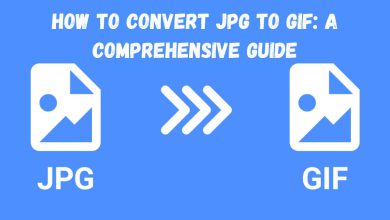
In the digital age, making images good for the web is essential. It improves website speed and helps users. Google is the top search engine. It values fast and good images. One of the most effective ways to achieve this is by using the WebP format. This blog post shows how to optimize images for Google search. Using the WebP format helps improve your site’s performance and rankings.
1. Introduction to WebP Format
What is WebP?
WebP is a modern image format. Google developed it. It offers better lossless and lossy compression for web images. WebP images are smaller than JPEG and PNG. They keep high quality. This makes them ideal for faster loading and improved performance.
Why Use WebP?
- Reduced File Size: WebP images are typically 25-34% smaller than JPEGs and 26% smaller than PNGs.
- WebP supports both lossy and lossless compression. It keeps image quality while reducing file size.
- Compatibility: Supported by most modern web browsers, including Chrome, Firefox, and Edge.
2. Benefits of Using WebP
Faster Loading Times
Smaller image sizes mean faster loading times for your web pages. This improves user experience. It also cuts bounce rates and boosts time on your site.
Improved SEO
Google considers page load time as a ranking factor. Using WebP can improve your website’s performance. This can boost your search rankings.
Bandwidth Savings
Smaller images use less bandwidth. This helps mobile and slow internet users.
Enhanced User Experience
Faster loading images make browsing smoother. They also make it more enjoyable. This can lead to higher user satisfaction and engagement.
3. How to Convert Images to WebP
Using Online Tools
Converting images to WebP format can be easily achieved using online tools. Here are two reliable options:
- FileProInfo WebP Converter: FileProInfo provides a straightforward and user-friendly interface for converting images to WebP. You upload your image. You choose the WebP format. The tool will handle the conversion. It supports various image formats and ensures high-quality output.
Steps to Convert Using FileProInfo:- Visit the FileProInfo WebP Converter.
- Upload your image by clicking the “Choose File” button.
- Select WebP as the output format.
- Click the “Convert” button.
- Download your converted WebP image.
- Jedok WebP Converter is free and efficient. It supports batch conversion. The tool is designed for simplicity and quick conversions. It’s ideal for users who need to convert many images at once.
Steps to Convert Using Jedok:- Visit the Jedok WebP Converter.
- Drag and drop your images or click to upload.
- Choose WebP as the desired output format.
- Click the “Convert” button.
- Download the converted WebP images once the conversion is complete.
These online tools make it easy to convert your images to WebP. You don’t need to install software or have advanced technical knowledge.
4. Implementing WebP on Your Website
Serving WebP Images
To serve WebP images, you’ll need to ensure that your server supports the format. It must also deliver the right image based on the user’s browser. Here are some methods:
- HTML Picture Element: Use the <picture> element to provide different image formats based on browser compatibility.
<picture> <source srcset="image.webp" type="image/webp"> <source srcset="image.jpg" type="image/jpeg"> <img src="image.jpg" alt="Sample Image"> </picture>- Server-Side Detection: Use server-side scripting to detect the browser’s capabilities and serve the appropriate image format. For example, in Apache, you can use .htaccess:
RewriteEngine On RewriteCond %{HTTP_ACCEPT} image/webp RewriteCond %{REQUEST_FILENAME} \.(jpg|jpeg|png)$ RewriteCond %{REQUEST_FILENAME}.webp -f RewriteRule \.(jpg|jpeg|png)$ %{REQUEST_URI}.webp [T=image/webp,E=accept:1] Header append Vary Accept env=REDIRECT_acceptWordPress Plugins
If you’re using WordPress, several plugins can help you integrate WebP images easily:
- WebP Express: Automatically serves WebP images to compatible browsers.
- ShortPixel: Compresses and converts images to WebP format.
- Imagify: Another plugin that supports WebP conversion and optimization.
5. SEO Benefits of WebP
Improved Page Load Speed
Page load speed is a crucial factor in SEO. Faster pages are more likely to rank higher in search results. WebP images help them load faster.
Lower Bounce Rates
Fast-loading pages tend to have lower bounce rates. When users can access content quickly. They are more likely to stay and engage with your site. This can improve your SEO.
Enhanced Mobile Performance
More people are using the web on mobile. So, it’s essential to optimize images for faster load times on mobile. WebP images ensure that your mobile visitors have a smooth experience. This can boost your mobile search rankings.
6. Conclusion
Using WebP for your images is a strategic move. It will improve your website’s performance, user experience, and SEO. You can reduce image file sizes without hurting quality. This will make your site load faster and have lower bounce rates and better search rankings. Many tools and techniques are available. They make converting and using WebP images easy. Start optimizing your images today. See the good impact on your website’s speed and search visibility.


